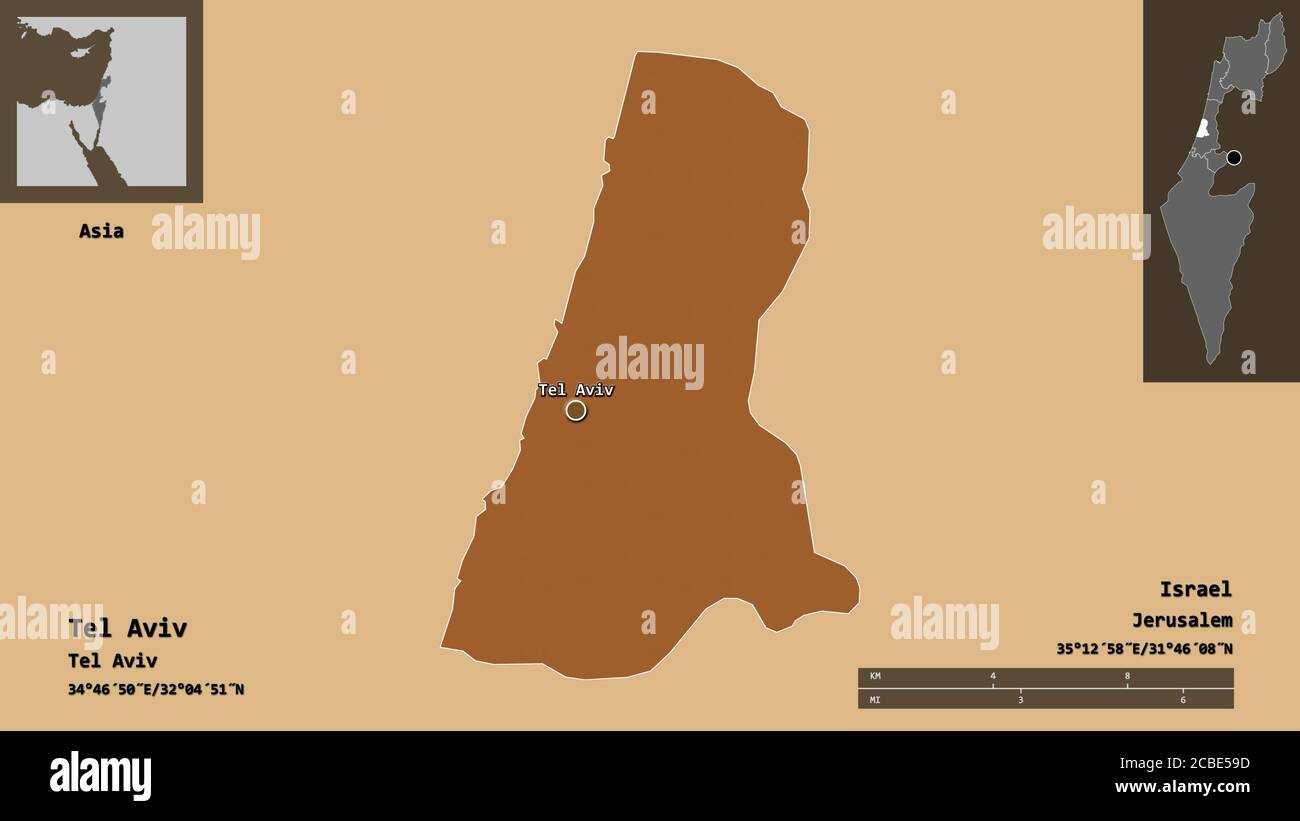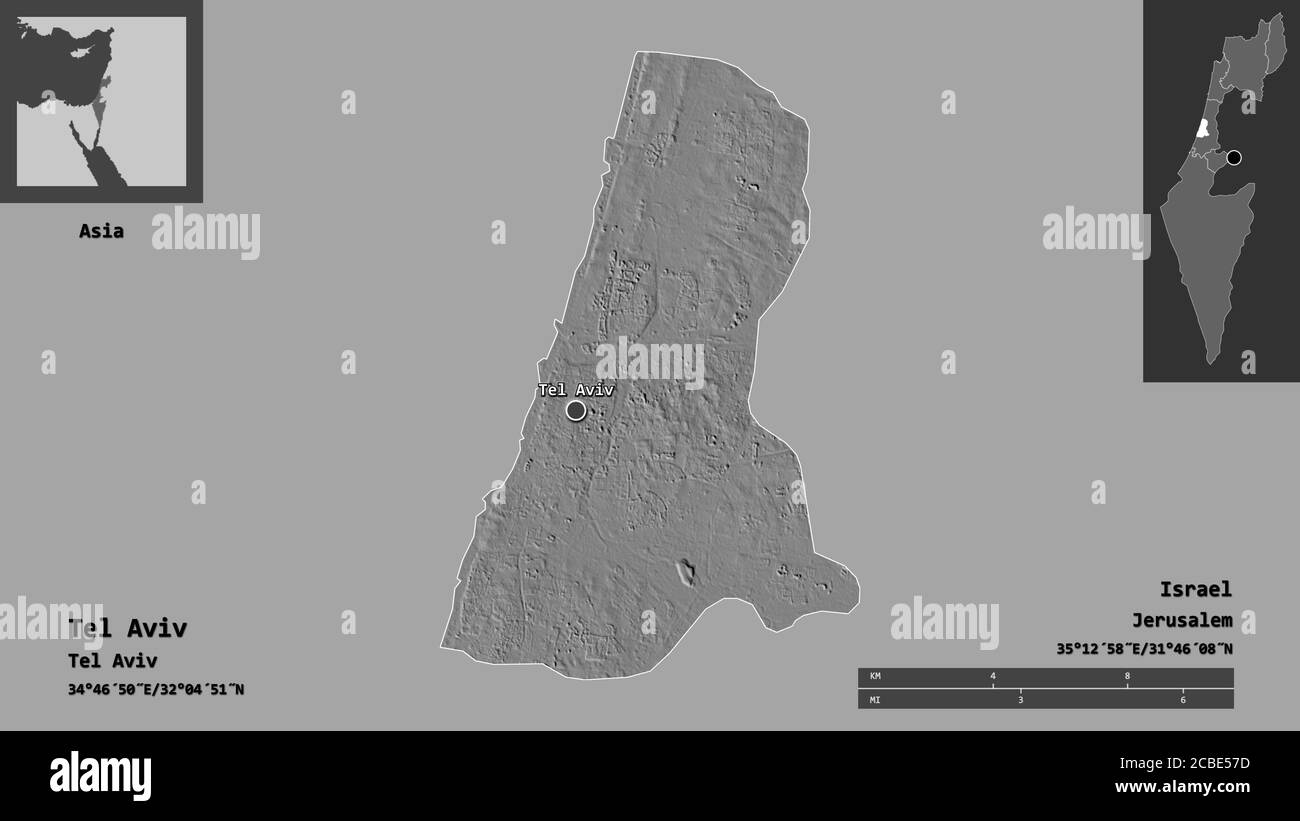Iran To Tel Aviv: Unpacking The Kilometers & Geopolitical Implications
Table of Contents
- Understanding the Geographical Nexus: Iran and Tel Aviv
- Calculating the Distance from Iran to Tel Aviv Kilometers: The Tools
- The Straight Line: Aerial Distance Explained
- Navigating the Terrestrial Path: Route Planning Challenges
- Historical Context: The Geopolitical Landscape
- Strategic Implications of the Proximity
- Beyond the Numbers: Human Perspectives
- The Role of Technology in Distance Measurement
Understanding the Geographical Nexus: Iran and Tel Aviv
At first glance, one might assume that the **distance from Iran to Tel Aviv in kilometers** is a simple matter of drawing a line on a map. However, the reality is far more nuanced. Iran, a vast nation spanning over 1.6 million square kilometers, has various points from which to measure, with Tehran, its capital, often serving as the primary reference point. Tel Aviv, a major economic and cultural hub in Israel, is similarly a key reference. The geographical separation isn't just about the two cities, but about the broader territories they represent and the intervening landscapes. This includes diverse terrains ranging from deserts and mountains to coastal plains, each presenting its own set of challenges and considerations for travel or projection of influence. The Middle East is a region defined by its intricate geography, where every mountain range, desert expanse, and body of water plays a role in shaping human interactions and geopolitical strategies. The landmasses separating Iran and Israel are not empty spaces; they are home to other nations, each with its own sovereignty, interests, and alliances. This means that any discussion of the **distance from Iran to Tel Aviv in kilometers** must inherently consider the territories of Iraq, Syria, and Jordan, which lie between them. These intervening countries are not merely transit points but active players whose geopolitical alignment and stability directly impact the practicalities of traversing this distance, whether by air or land.Calculating the Distance from Iran to Tel Aviv Kilometers: The Tools
In the digital age, determining the **distance from Iran to Tel Aviv in kilometers** has become remarkably accessible thanks to advanced online tools. Websites and applications specializing in geographical calculations offer immediate insights into the separation between virtually any two points on Earth. These platforms leverage sophisticated algorithms, satellite data, and comprehensive mapping databases to provide accurate measurements, often distinguishing between "as the crow flies" (aerial) distance and actual travel routes. This technological advancement has democratized geographical information, making it available to anyone with an internet connection, from students to seasoned geopolitical analysts. One prominent example of such a tool is `distance.to`. This worldwide distance calculator is designed to provide users with quick and precise measurements. As the data suggests, "With the distance calculator `distance.to`, you can easily calculate the distances between places all over the world." The process is straightforward: "Simply enter any desired location into the search function and you will get the shortest" distance. Whether you need to know the "distance in kilometres between Tehran and Israel" or any other global location, these tools simplify what was once a complex cartographic task. They are invaluable for understanding the raw geographical separation, which is the foundational layer for any further analysis.How `distance.to` and Similar Tools Work
The functionality of `distance.to` and similar platforms is rooted in their ability to process vast amounts of geographical data. When you "just enter the desired location in the search box and you will get the shortest" distance, the system performs a complex calculation using the geographical coordinates (latitude and longitude) of the two specified points. These tools typically offer not just the straight-line distance but also additional features. For instance, they "provide an itinerary planner, interactive maps," and can show "the distance in kilometres between Spain and Italy and displays the route on an interactive map." This comprehensive approach means you can visualize the route, understand potential travel times, and even see flight distances, offering a holistic view of the kilometric separation. They are essential for anyone needing to quickly ascertain the **distance from Iran to Tel Aviv in kilometers** or any other global coordinate pair.The Straight Line: Aerial Distance Explained
When discussing the **distance from Iran to Tel Aviv in kilometers**, the most common and often cited figure is the "aerial distance," also known as the "as the crow flies" distance. This measurement represents the shortest possible line between two points on the Earth's surface, disregarding any geographical obstacles, political borders, or actual travel routes. It's a direct, straight-line measurement calculated using the great-circle distance formula, which accounts for the Earth's curvature. For instance, if you were to search for the "distance in kilometres between Tehran and Israel" on a tool like `distance.to`, it would primarily give you this aerial measurement. For the specific case of the **distance from Iran to Tel Aviv in kilometers**, taking Tehran (Iran's capital) and Tel Aviv (a major Israeli city) as reference points, the aerial distance is approximately 1,500 to 1,600 kilometers (around 930 to 995 miles). This figure serves as the absolute minimum separation. While it doesn't reflect the practicalities of travel, it is crucial for strategic assessments, particularly in military contexts, where the range of aircraft, missiles, and other long-range capabilities is measured against this direct line. It represents the theoretical minimum required to bridge the geographical gap, irrespective of the complex political and physical landscapes that lie between.Navigating the Terrestrial Path: Route Planning Challenges
While the aerial **distance from Iran to Tel Aviv in kilometers** provides a baseline, understanding the practicalities of ground travel reveals a far more complex picture. A terrestrial journey between these two points is not a straightforward drive. It would involve traversing multiple international borders and navigating through countries with intricate political landscapes and varying levels of infrastructure. The direct land route would typically pass through Iraq, Syria, and potentially Jordan, each presenting significant logistical and security challenges. This makes a direct, uninterrupted ground journey virtually impossible under current geopolitical conditions, highlighting that the kilometric separation on a map is vastly different from real-world travel possibilities. The `distance.to` calculator, while excellent for aerial measurements, also offers "route planner" functionalities. However, for a journey of this nature, its route planning capabilities would highlight the sheer impracticality. The absence of diplomatic relations, coupled with ongoing conflicts and security concerns in the intervening nations, means that any land-based transit would be fraught with immense difficulties, if not outright impossible for civilians. This stark contrast between aerial and terrestrial distances underscores the critical role of geopolitics in shaping geographical connectivity, turning what might appear as a manageable **distance from Iran to Tel Aviv in kilometers** into an insurmountable barrier for ground travel.Factors Affecting Ground Travel
Several critical factors would influence any theoretical ground travel between Iran and Tel Aviv, making the actual journey far longer and more arduous than the straight-line **distance from Iran to Tel Aviv in kilometers**. Firstly, the political landscape is paramount; the lack of diplomatic ties between Iran and Israel, combined with the complex political situations in Iraq and Syria, means that direct transit across these borders is not feasible. Secondly, security concerns are immense, with various conflict zones and unstable regions along any potential route. Thirdly, infrastructure varies significantly; while some areas might have well-maintained roads, others could be rugged, unpaved, or even impassable. Lastly, border crossings themselves are major hurdles, requiring specific visas, permissions, and often facing long delays, if they are open to international transit at all for such a route. These factors combine to make the true kilometric journey by land exponentially longer and practically unachievable for most.Historical Context: The Geopolitical Landscape
The **distance from Iran to Tel Aviv in kilometers** cannot be fully appreciated without understanding the deep historical and geopolitical context that defines the relationship between Iran and Israel. For decades, these two nations have been locked in a bitter rivalry, often described as a "shadow war" or a "cold war" in the Middle East. While both countries once had diplomatic ties prior to the 1979 Iranian Revolution, the establishment of the Islamic Republic brought about a fundamental shift. Iran adopted an anti-Zionist stance, viewing Israel as an illegitimate entity and a key adversary in the region, largely due to its alliance with the United States and its treatment of Palestinians. This historical animosity has transformed the geographical separation into a strategic buffer, rather than a simple measure of space. The **distance from Iran to Tel Aviv in kilometers** becomes a critical parameter in military doctrines, intelligence operations, and regional power projections. Both nations have invested heavily in defense capabilities, including long-range missile programs and air defense systems, with the kilometric separation playing a direct role in their strategic calculations. The intervening countries, particularly Iraq and Syria, have become arenas for proxy conflicts and strategic maneuvering, further complicating any simple understanding of the geographical gap. The historical narrative thus imbues the numerical distance with layers of political tension and strategic importance, making it far more than just a measurement.Strategic Implications of the Proximity
The relatively short **distance from Iran to Tel Aviv in kilometers** carries profound strategic implications for both nations and the wider Middle East. This geographical proximity, especially in terms of aerial reach, means that military assets and capabilities become highly relevant. For Iran, the development of long-range ballistic missiles and drones capable of traversing this distance is a key component of its deterrence strategy and its ability to project power. For Israel, the concern over Iran's nuclear program and its missile capabilities is heightened by this very proximity, leading to a focus on advanced air defense systems and preemptive strategies. The "worldwide distance calculator with air line, route planner, travel duration and flight distances" becomes a tool not just for tourism, but for strategic analysis, showing the potential range of various military assets. The strategic landscape is further complicated by the fact that the **distance from Iran to Tel Aviv in kilometers** necessitates overflight of other sovereign nations. This means that any military action, whether defensive or offensive, would inevitably involve the airspace of Iraq and Syria. These countries, often unstable and with their own complex internal and external dynamics, become unwilling participants in the geopolitical chess match. The implications extend beyond direct military confrontation to include cyber warfare, intelligence gathering, and proxy conflicts, all of which are influenced by the perceived or actual ability to bridge this geographical gap. The strategic calculus is thus not just about the numbers, but about the political will and technical capacity to overcome the intervening space.Airspace Restrictions and Flight Paths
A critical aspect of the strategic implications of the **distance from Iran to Tel Aviv in kilometers** involves airspace restrictions and established flight paths. Commercial flights between Iran and Israel are non-existent due to political hostilities. Even if they were, any direct flight would need to navigate the complex and often contested airspaces of Iraq and Syria. These airspaces are subject to various restrictions, no-fly zones, and potential threats, making direct civilian or military overflight highly problematic. While a "worldwide distance calculator with air line" can show the shortest aerial path, it doesn't account for the political realities of air traffic control or potential military interception. This means that even for aerial operations, the actual flight path would likely be circuitous, adding to the effective kilometric separation and increasing travel time and fuel consumption. The theoretical shortest path is often far from the practical reality in a politically charged region.Beyond the Numbers: Human Perspectives
While the **distance from Iran to Tel Aviv in kilometers** is often discussed in terms of geopolitical strategy and military capabilities, it's crucial to remember the human element. For ordinary citizens in both Iran and Israel, this geographical separation, coupled with political animosity, translates into a profound lack of direct interaction. There are no direct flights, no open borders, and very limited opportunities for cultural exchange or tourism. This absence of direct contact often leads to a reliance on media narratives, which can sometimes be polarizing, further entrenching perceptions and misunderstandings. The kilometric distance, therefore, becomes a symbol of a deeper human separation, where shared humanity is often overshadowed by political tensions. The human cost of this geopolitical divide is immense. Families with relatives in other parts of the world might face challenges, and opportunities for academic, scientific, or cultural collaboration are severely restricted. The concept of the **distance from Iran to Tel Aviv in kilometers** takes on a different meaning when viewed through the lens of individuals who might otherwise share common interests, aspirations, or even historical ties. The tools that "show the distance in kilometres between London and Singapore" or "between Nigeria and Nairobi" facilitate connection and understanding. In contrast, the Iran-Israel distance, despite being numerically quantifiable, represents a chasm in human interaction, a stark reminder that geography is not merely about space, but about the people who inhabit it and the political systems that govern their interactions.The Human Element in Regional Dynamics
The human element in regional dynamics surrounding the **distance from Iran to Tel Aviv in kilometers** extends beyond just the citizens of these two nations. The populations of Iraq, Syria, and Jordan, who reside in the intervening lands, are also deeply affected. Their daily lives, security, and economic prospects are often intertwined with the broader geopolitical tensions that play out across this geographical span. Refugee crises, economic sanctions, and the constant threat of conflict are realities for millions in the region, directly influenced by the strategic calculations made based on the kilometric separation and the capabilities to bridge it. Understanding the human impact adds a vital layer of empathy and urgency to any discussion of the raw geographical numbers, highlighting that the distance is not just about two capitals, but about the lives of millions caught in the geopolitical crossfire.The Role of Technology in Distance Measurement
The ability to accurately determine the **distance from Iran to Tel Aviv in kilometers** owes much to advancements in geospatial technology. From early cartography to modern satellite imaging and GPS systems, technology has continually refined our understanding of geographical separation. Tools like `distance.to` are prime examples of this evolution, leveraging global positioning data to provide precise measurements. As the data points out, these calculators are "worldwide distance calculator with air line, route planner, travel duration and flight," making complex geographical computations accessible to the public. They can "show the distance from Tokyo to the North Pole, Equator, South Pole and any place in the world," demonstrating their universal applicability. This technological prowess extends beyond simple measurement. Interactive maps, a feature often included with these distance calculators, allow users to visualize the route, understand the terrain, and even explore satellite imagery of the areas between Iran and Tel Aviv. This visual component is crucial for grasping the true nature of the **distance from Iran to Tel Aviv in kilometers**, moving beyond a mere number to a comprehensive geographical understanding. The continuous development of these technologies ensures that our ability to measure, analyze, and comprehend geographical distances remains at the forefront, providing essential data for everything from logistical planning to geopolitical strategy.Conclusion
The **distance from Iran to Tel Aviv in kilometers** is far more than a simple geographical measurement. While the aerial distance, approximately 1,500 to 1,600 kilometers, provides a baseline, the practicalities of terrestrial travel are rendered virtually impossible by complex geopolitical realities. Tools like `distance.to` offer invaluable assistance in calculating these figures, providing both straight-line measurements and insights into potential routes. However, the true significance of this kilometric separation lies in its profound strategic implications, shaping military doctrines, influencing regional power dynamics, and impacting the lives of millions caught in the geopolitical crosscurrents. Understanding this distance requires looking beyond the numbers to the historical context, the political barriers, and the human consequences. It highlights how geography, intertwined with history and politics, dictates the very nature of international relations in a volatile region. As we continue to navigate a complex world, appreciating the nuances of such geographical distances remains critical. What are your thoughts on the strategic importance of this distance? Share your insights in the comments below, or explore other articles on our site to delve deeper into the fascinating interplay of geography and geopolitics.
TEL AVIV Map, Tel Aviv Travel Map, Tel Aviv Street Map, Tel Aviv Print

Shape of Tel Aviv, district of Israel, and its capital. Distance scale

Shape of Tel Aviv, district of Israel, and its capital. Distance scale